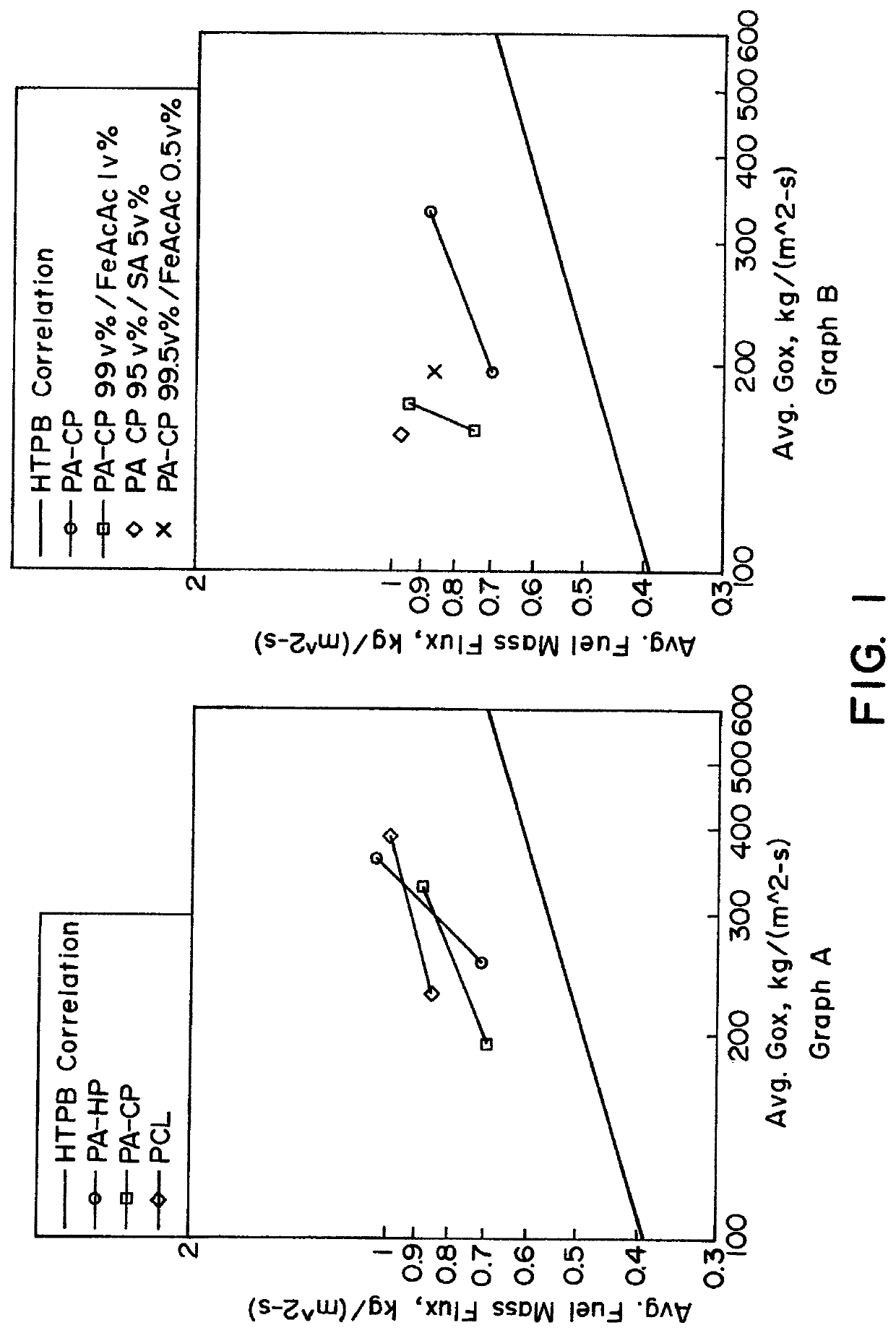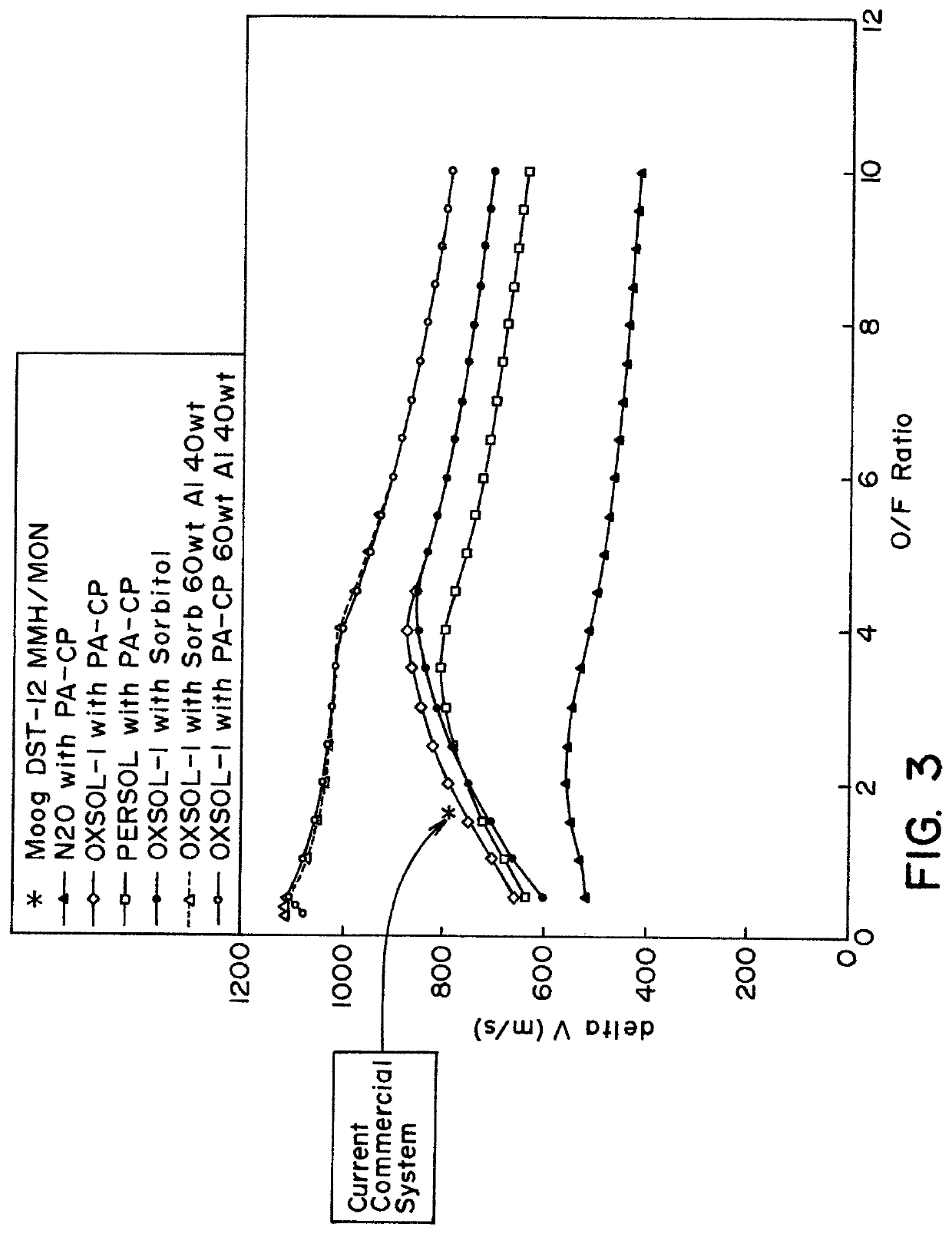High density hybrid rocket motor
a hybrid rocket and high density technology, applied in the field of solid fuel hybrid rocket motors, can solve the problems of low regression rate, low packing efficiency of current hybrid motors, design requiring either very long motors or complex port geometries, etc., and achieve high density hybrid, improved volumetric performance, and improved reliability.
- Summary
- Abstract
- Description
- Claims
- Application Information
AI Technical Summary
Benefits of technology
Problems solved by technology
Method used
Image
Examples
example 1
[0064]A POM / Al hybrid rocket motor grain was prepared. Polyacetal motor grains were prepared by twin screw compounding followed by single screw extrusion into 3″ diameter rods that were cut to 12″ lengths. Polyacetal Twin screw extrusion compounding was completed on a W&P ZSK-30 with a processing profile consisting of 191° C. inlet temperature, 192-197° C. mixing zone temperature, 200° C. exit die, 103-105 rpm screw rate, and 50-60 torque. Single screw extrusion was completed at Apexco-ppsi to produce a solid fuel grain of 3″ diameter directly. Grains were then adhesively bonded into the phenolic insulator tubes. Extruded rods were cut to length and epoxy cured into 0.25″ thick phenolic paper tubes. ½″ diameter holes were bored into the bonded fuel grains using an extended twist drill mounted on a centerstock on a lathe. The fuel grain was centered using a 4-jaw chuck and the ID was bored by drilling.
[0065]The fuel grains were fired in a ground (non flight weight motor with a 4″ con...
PUM
| Property | Measurement | Unit |
|---|---|---|
| density | aaaaa | aaaaa |
| density | aaaaa | aaaaa |
| volume ratio | aaaaa | aaaaa |
Abstract
Description
Claims
Application Information
 Login to View More
Login to View More - R&D
- Intellectual Property
- Life Sciences
- Materials
- Tech Scout
- Unparalleled Data Quality
- Higher Quality Content
- 60% Fewer Hallucinations
Browse by: Latest US Patents, China's latest patents, Technical Efficacy Thesaurus, Application Domain, Technology Topic, Popular Technical Reports.
© 2025 PatSnap. All rights reserved.Legal|Privacy policy|Modern Slavery Act Transparency Statement|Sitemap|About US| Contact US: help@patsnap.com



